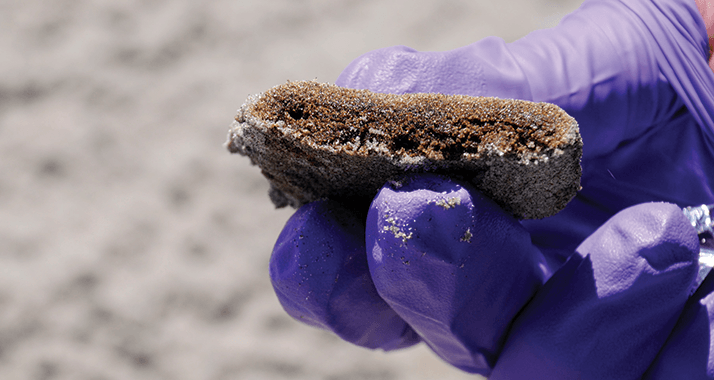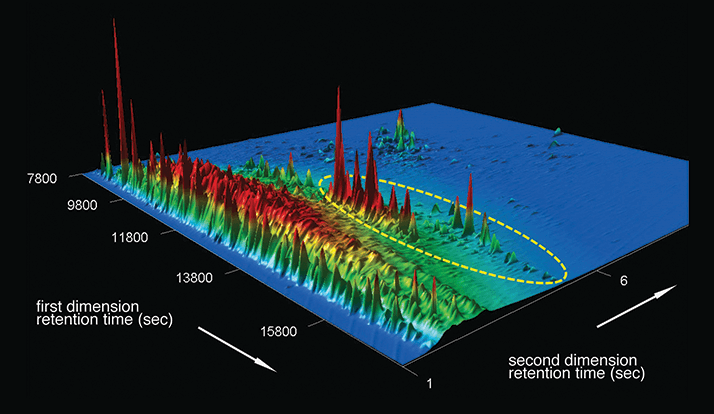In 2010, the Deepwater Horizon spill discharged an estimated 4.9 million barrels of oil into the Gulf of Mexico. Even today, residual oil is being washed ashore along the northern Gulf of Mexico coast, particularly the Alabama and Louisiana sections. Researchers from Woods Hole Oceanographic Institution, Bigelow Laboratory for Ocean Sciences, and the University of California, Santa Barbara have been using oil biomarkers to track the oil back to Deepwater Horizon, and recently published their findings (1). All oil has a unique history of formation, which leads to a specific relative composition of its various compounds. Some of those compounds – also known as molecular fossils – are used as biomarkers to identify oil and its origin.

“Oil biomarkers are commonly used in exploration or after spills for identification,” explains Christoph Aeppli, lead author of the study. “But there was some uncertainty about the recalcitrant nature of these biomarkers in the environment after years of exposure to sunlight, oxygen, and microbes.” To that end, the researchers collected oil samples over a 28-month period from along the Gulf shore and used comprehensive two-dimensional gas chromatography (GC×GC) to study levels of oil biomarkers (see Figure 1). “For such complex mixtures, traditional one-dimensional GC reaches its limits to chromatographically separate compounds,” says Aeppli, “GC×GC is quite a novel technique in oil spill analytics, and allows us to study the compositional change over time.”

But that’s not to say it was easy (for “Eight Tips for Easy GC×GC” see page 17). “Producing nice, reproducible GC×GC chromatograms is not trivial,” says Aeppli, “We used a setup that has been optimized over the years, and I was lucky to collaborate with co-authors Chris Reddy, who pioneered GC×GC for oil spill research, and Robert Nelson, who has been working with GC×GC for more than 10 years.” Long-term observation studies conducted over decades in arctic environments have shown that oil compounds eventually degrade, but Aeppli and his colleagues described themselves as “very surprised” when their analysis of the Deepwater Horizon oil spill revealed substantial degradation of compounds after just 18 months. One of the compound classes investigated, triaromatic steroids, have not been closely investigated before, but it is generally assumed that they are very stable. In fact, says Aeppli, “there are some laboratory studies showing that triaromatic steroids are more stable than hopanes. In contrast, we found that triaromatic steroids degraded quickly and were much less stable than hopanes, which are universally used in the oil spill community as one of the reference biomarkers.”

“Our research shows that while biomarker analysis is very powerful in identifying oil (even four years after a spill in a place like the Gulf of Mexico where there are thousands of oil platforms), one has to keep in mind that chemistry and biology are still active, and biodegradation and photooxidation can alter biomarker composition,” says Aeppli. The take home message is that the timescale and environment being investigated need to be carefully considered when selecting certain biomarker ratios for fingerprinting oil. Pushing oil spill forensics even further, Aeppli is using the same GC×GC methods to investigate oil from the Exxon Valdez, which ran aground on a reef in 1989, dumping an estimated 260,000 barrels into Prince William Sound. “It will be very interesting to compare and contrast these two iconic oil spills,” Aeppli concludes.
